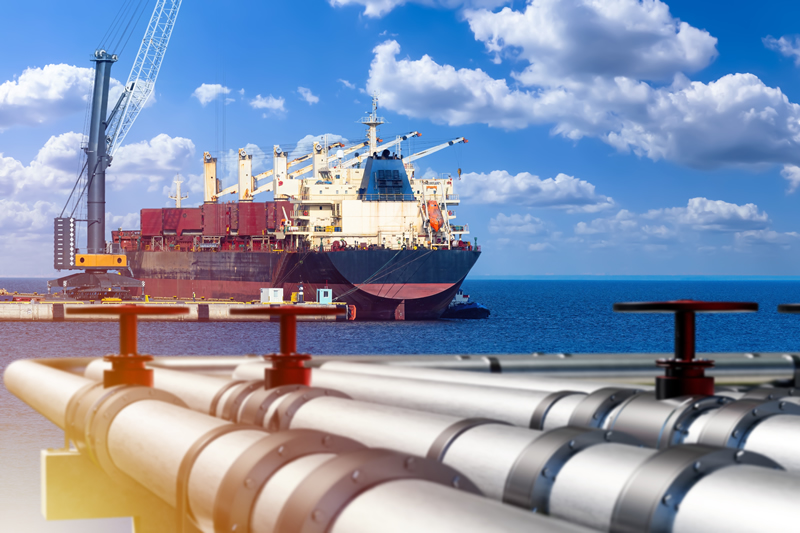A Combined CCUS & Shipping Strategy Starts In 2025
17
The UK government is making significant strides in establishing a comprehensive carbon capture, utilisation, and storage (CCUS) supply chain, though integrating non-pipeline transport (NPT) clusters into the network remains in its early stages.

Following the publication of a CCUS roadmap in December 2023, the government approved £21.7 billion (US$26.5 billion) in funding for Track-1 clusters last October. These clusters will serve as the UK’s first two large-scale sequestration sites, with pipeline-connected emitter networks in Teesside and Merseyside. The government has confirmed that construction of the UK’s carbon capture industry will commence in 2025.
UK’s First CO
The Northern Endurance Partnership (NEP), responsible for CO2transport and storage within the East Coast Cluster, reached financial close in December, allowing its infrastructure network to move into execution. Initially, the system will support three carbon capture projects in Teesside:
- NZT Power
- H2 Teesside
- Teesside Hydrogen CO2 Capture
Backed by BP, Equinor, and TotalEnergies, NEP’s network is expected to transport and store up to 4 million tonnes of CO2 annually, with construction set to begin in mid-2025 and operations scheduled for 2028.
Expanding CCS Beyond Oil and Gas
Globally, carbon capture and storage (CCS) has been primarily used for enhanced oil and gas recovery, particularly in the US, where economic incentives and existing expertise support deployment. However, by 2030, CCS is expected to play a growing role in:
- Blue hydrogen production
- Abated power generation (gas, coal, and waste-to-energy plants)
- Industrial applications, including cement, petrochemicals, and steel
CCS is particularly crucial for the cement sector, where emissions reductions are difficult without carbon capture. While the steel industry is increasingly adopting electrification and hydrogen solutions, CCS remains a viable option for cutting emissions.
Currently, the vast majority of captured CO2 is permanently stored underground, with just 2% used in industries such as greenhouse cultivation. However, future applications include producing plastics and synthetic fuels for ships, planes, and trucks, a key potential market in a net-zero economy where fossil fuel-derived carbon must be replaced by captured or recycled sources.
Non-Pipeline Transport (NPT): The Next Phase of CCUS
To further expand CCUS adoption, the UK government is exploring non-pipeline transport (NPT) clusters. In this model, pipelines transport CO2 from emitters to terminals, but ships, rail, or trucks deliver it to storage sites instead of dedicated pipelines.
In April 2024, the government issued a Call for Evidence on NPT, later summarising responses in November. Findings indicate strong industry interest in NPT, with several projects expected to be ready to capture significant CO2 volumes by 2030.
7CO2: A Pioneering Non-Pipeline Transport Hub
One of the UK's leading NPT projects is 7CO2, a carbon capture and shipping hub in southwest England. A coalition of regional energy producers, CO2 storage firms, and maritime transport providers has signed an agreement to assess its feasibility.
How 7CO2 Works:
- Captured CO2 is transported by pipeline or rail to Avonmouth Docks.
- The CO2 is then liquefied, stored, and shipped to permanent geological storage.
- Alternatively, captured CO2 may be used to produce low-carbon fuels for aviation and shipping.
The 7CO2 hub aims to be a national catalyst for CO2 shipping and rail transport, supporting regional job creation, investment, and industrial decarbonisation. As the UK’s CCUS industry evolves, NPT solutions like 7CO2 could play a vital role in broadening access to carbon capture technology, enabling industries beyond pipeline-connected clusters to participate in decarbonisation efforts.
#Protea #Emissions #Monitoring #CEMS #FTIR #Gas #Analysers #Shipping #Marine #Carbon #Capture
Other Articles
Global Underground CO2 Storage Data Offers Hope Amid Rising Emissions
01
IMO Postpones Adoption Of Global Net-Zero Shipping Framework
04
Pioneering Carbon Capture Projects Ready For Construction
03
Methanol & Ammonia Deemed Ready As Zero-Emission Shipping Fuels
01
Carbon Capture Storage Reaching A Turning Point In Decarbonisation
13
CCS To Capture 15% Of Shipboard Carbon Emissions By 2050
29
Global Shipping Industry Struggles To Navigate Net Zero Transition
21
Carbon Capture Surges as Economics Policy & Industry Demand Align
14
GHG Emissions At Ports On The Rise Despite Initiatives
07
Carbon Capture Utilisation & Storage In A Nutshell
30